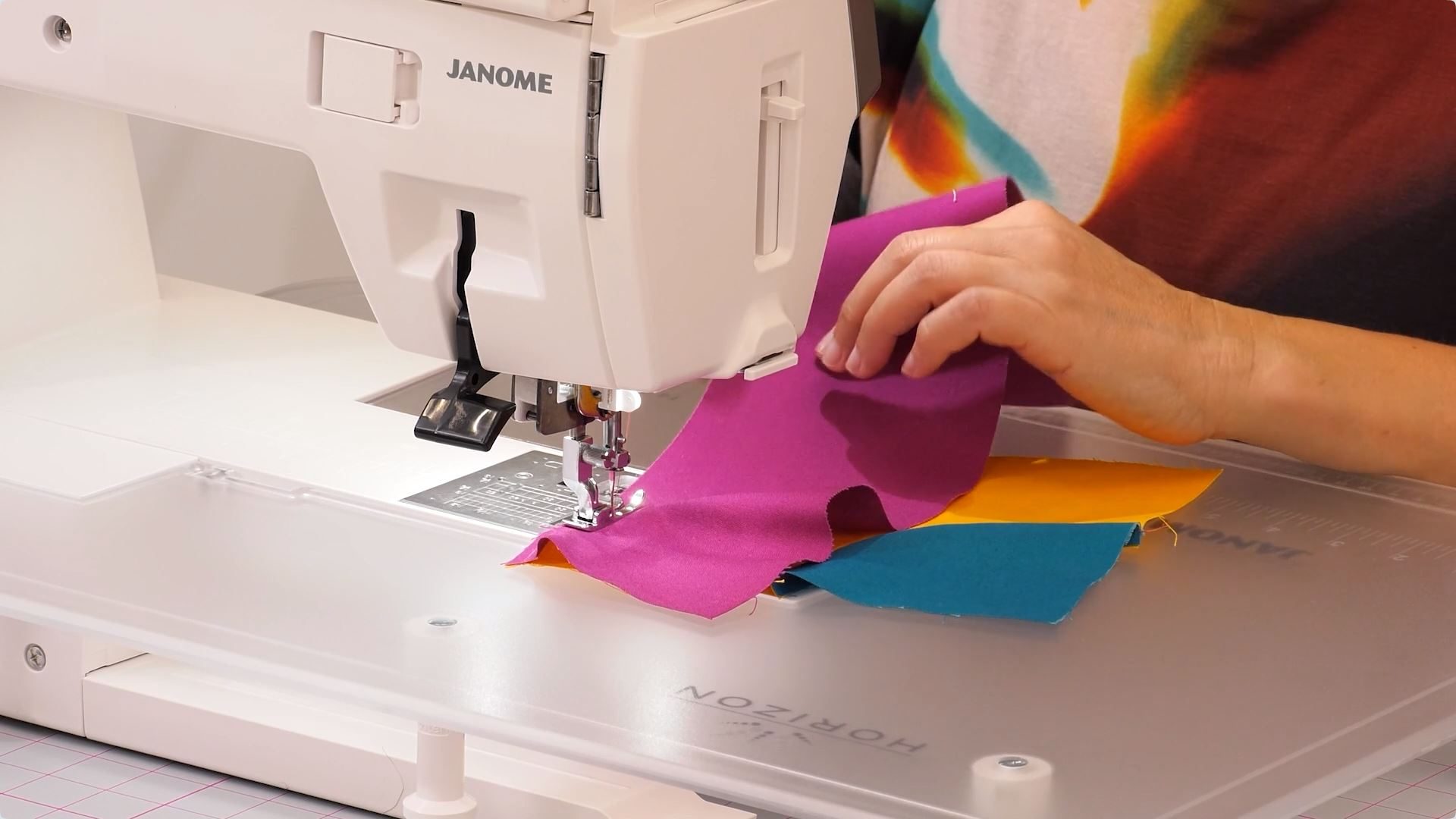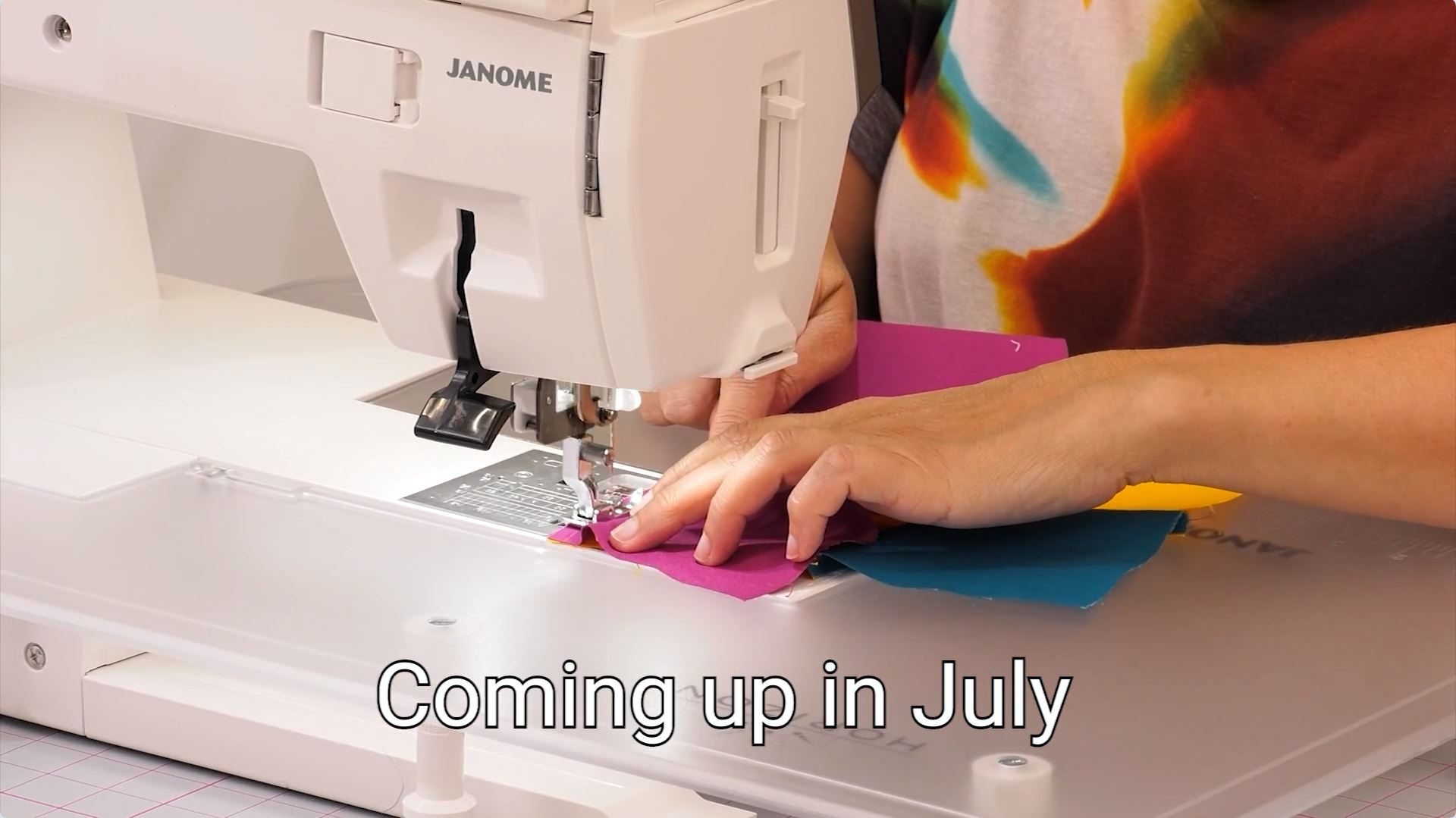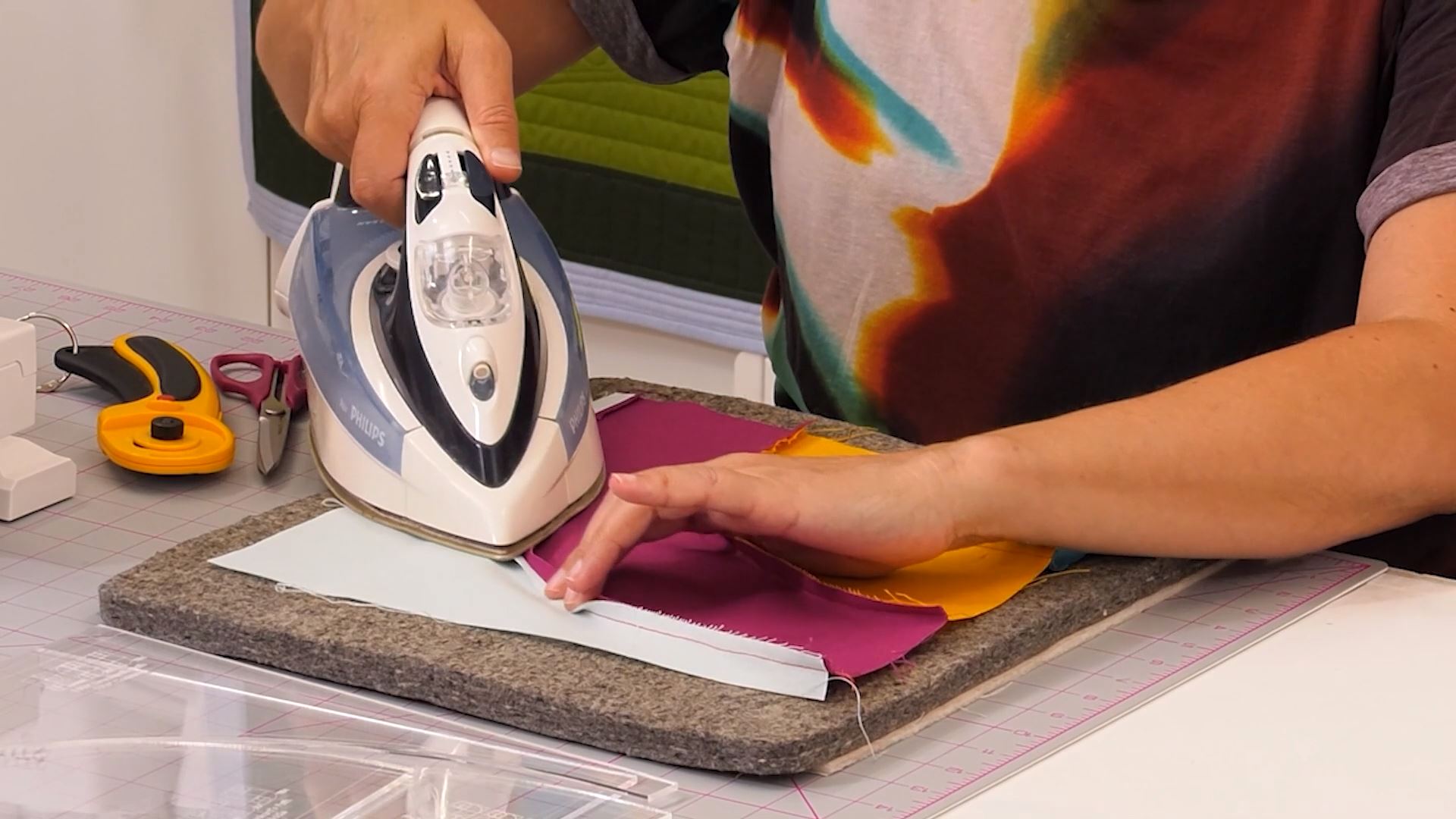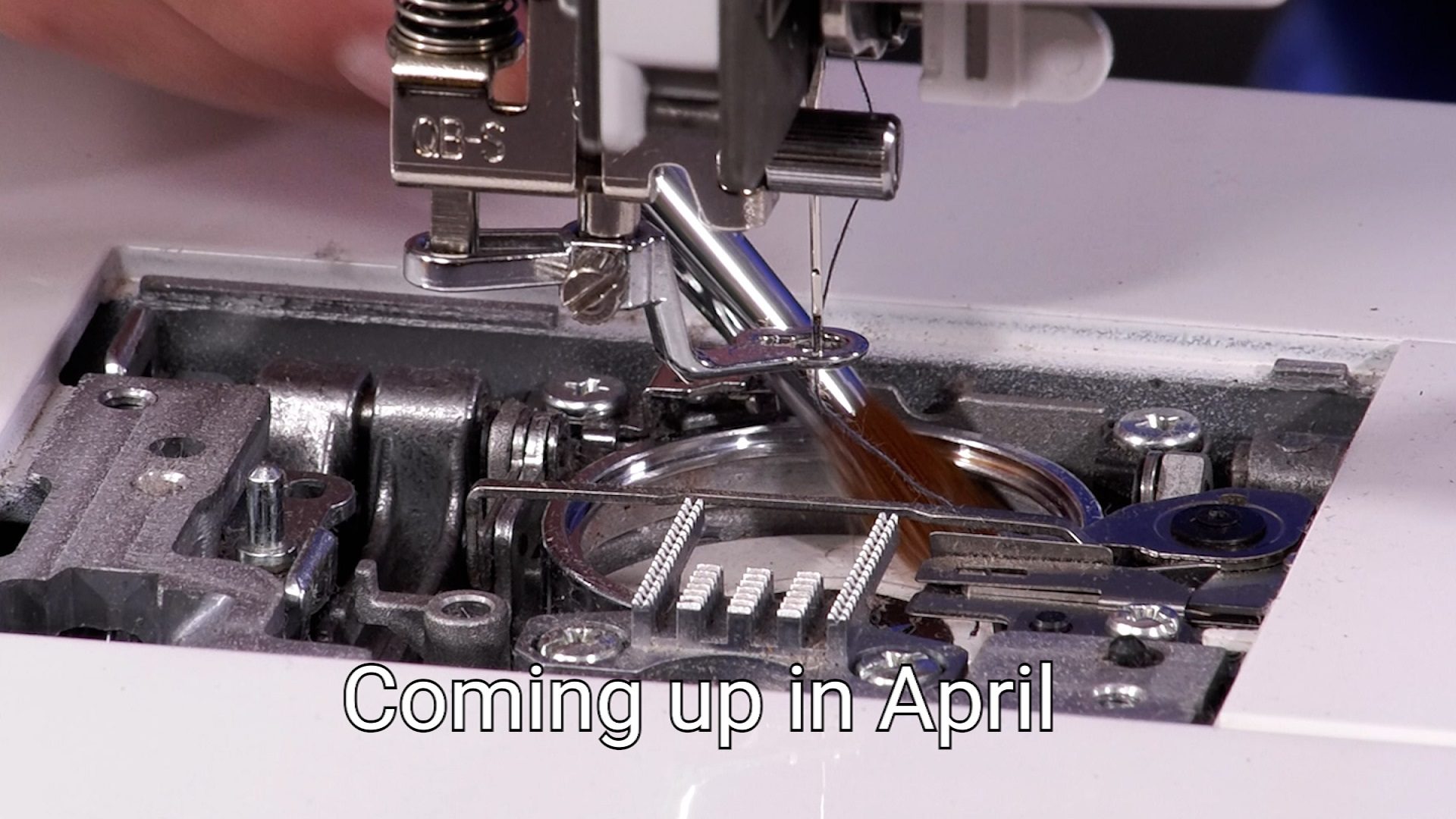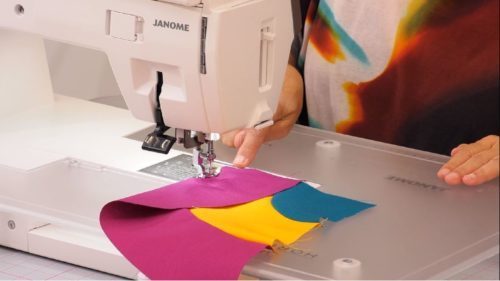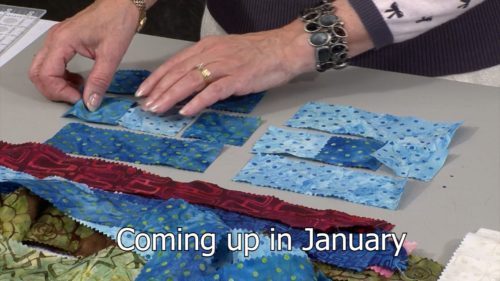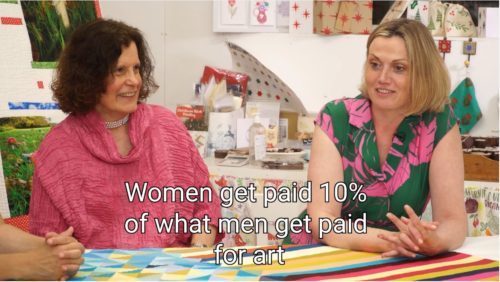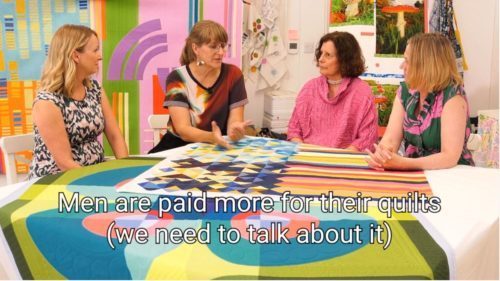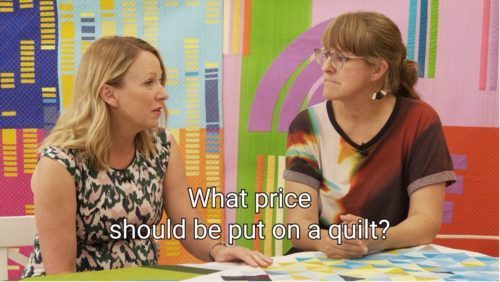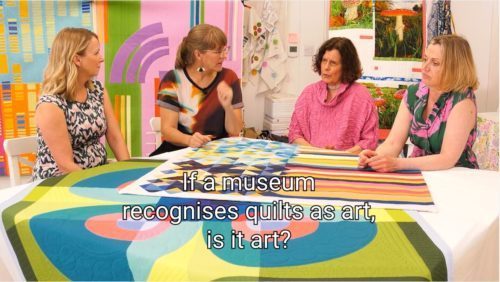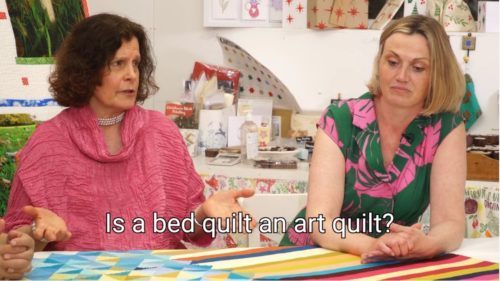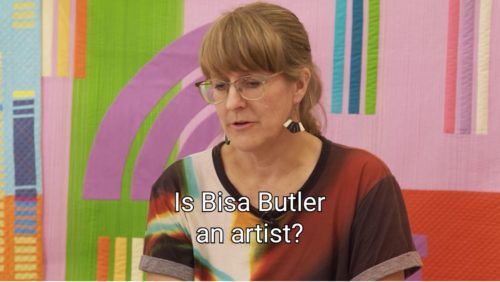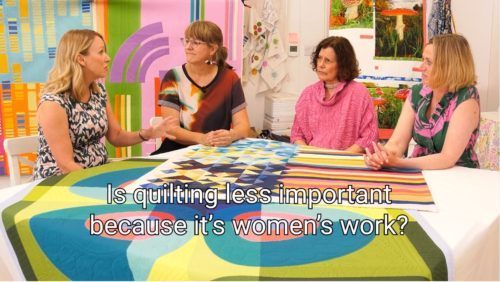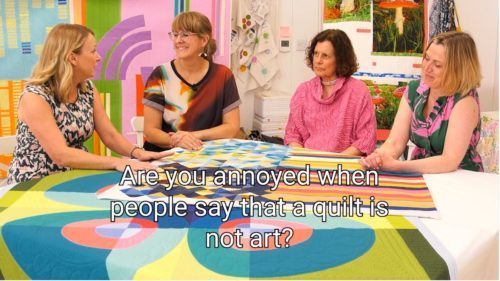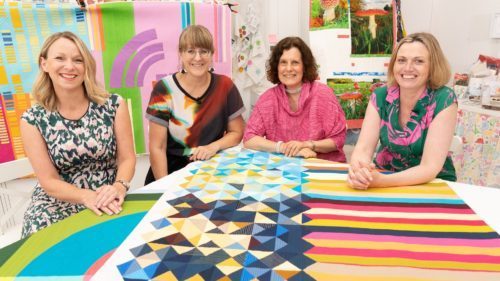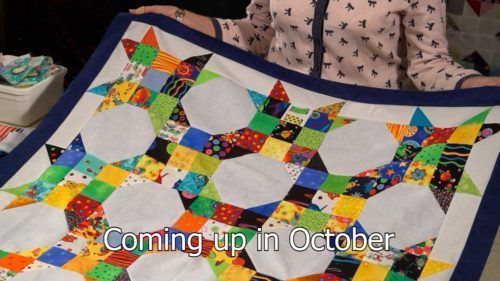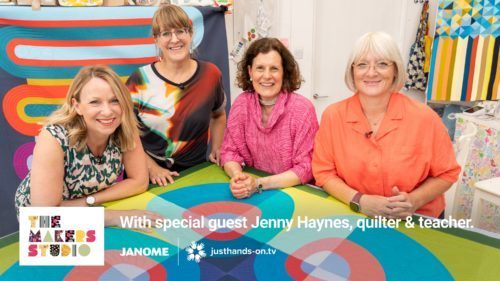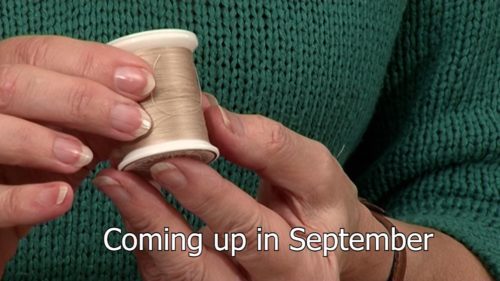About Jenny
Jenny is a modern quilt designer and teacher known for her colourful, curvy machine pieced patterns.
Jenny Haynes (née Nilsson) studied Pattern Cutting and Tailoring in her native Stockholm. Soon after, she followed her passion for fabrics and moved to London to study Fashion and Textiles at the London College of Fashion. She went on to develop her own label ‘Papper, Sax, Sten’ (that’s ‘Paper, Scissors, Stone’ in case you’re wondering!), creating award-winning designs that reflect her many different influences. She is based out of Sheffield, now.
Her bespoke quilts and furnishings are recognised for their clean and simple, mid-century modern design. Jenny mixes rich colours with pastels and is not scared of a colour clash. She often uses her trademark curves together with solid fabrics, while remaining faithful to her Scandi’ roots.
Jenny’s work was recognised in Summer 2015 when Jenny was invited by the Swedish Chamber of Commerce, along with 18 other Swedish designers, to be a part of Heal’s Swedish Summer Exhibition. Heal’s have a long history of promoting Swedish design with exhibitions in 1923, 1951 and 1971.
Her quilts and patterns appear regularly in books and magazines, including Thames & Hudson for the V&A and in Patchwork & Quilting: A Maker’s Guide, ‘Designed by teachers and practitioners at the leading edge of today’s craft revival.
Two of her quilts won awards at QuiltCon 2019 in Nashville. QuiltCon is arranged by the Modern Quilt Guild and is the biggest exhibition of modern quilts in the World.
When Jenny isn’t designing her curvy and quirky quilt patterns, she teaches at the V&A as well as giving talks and running workshops for Guilds and textile venues in the UK and abroad. She also offers live online workshops.
You can watch Jenny demonstrate how to sew no pin curves in this episode of The Makers Studio series.
Signature Technique
Colourful curvy quilt patterns
Top Tips
- Use a shorter stitch length (1.8) for stitching curves to give your block extra strength and to avoid splitting in the seam.
- When colours clash a bit it gives your quilt spark.
- When sewing curves, always start with the smallest curve then work your way up.
- Your finger is the pin when sewing no pin curves.
- Always finish all of your piecing before pressing your block. It’s easy to stretch your block out of shape if you press before you are done.
- Press your seams open for a flat, block print like finish.
- Use a tailor’s block to help you seams stay flat.
- Precise and variable quilting designs help to enhance the organic shapes in your quilt.
Videos
Patterns
Posts
What size do you need to cut with the rotary cutter?
The rotary cutter means that you dont have to use templates and here are some simple rules that you can apply throughout your patchwork: On the Flying geese fast no-waste method you just need to add 1 1/4" to the finished size you need for the larger square so for 4" you need 5 1/4" and then 7/8 to the size of the smaller square - so again you are right at 2 7/8 and if you want to enjoy the video on this click here: The other magic numbers for rotary cutting are as follows:
For a plain square you add 1/2" so 4" finished becomes 4 1/2" For a half-square triangle we now add 1" - so cut 5", - and once sewn trim back to be an accurate 4 1/2" before sewing
and for quarter-square triangles we add 1 1/4" (as per the flying geese) and pay attention to the seam allowance we sew!
Do you love Butterflies?
I do and certainly can't resist fabric that has them on; not so keen on moths however. Still follow this link and you will see them in a whole new light: North Carolina-based artist Yumi Okita creates beautiful textile sculptures of moths, butterflies, and other insects with various textiles and embroidery techniques. The pieces are quite large, measuring nearly a foot wide and contain other flourishes including painting, feathers, and artificial fur.
Site Upgrade Coming Soon
From around 28th July, you will notice some changes to the shape of the video screen as we have been busy converting all the videos to a format that is more user friendly, especially for those on iPads and tablets: you should notice that the video screens are bigger and slightly higher up the page When you notice the change has happened, iPad and tablet users won't have to use Puffin, but you can use your regular browsers if you prefer, (eg Safari on iPad, Internet on Android tablets) as you would for other websites you visit.


